The design field always demands the visual representation of an idea, multiple easy ways can represent the idea, like digital, pen sketches, pencil sketches, marker renderings digital rendering, CAD models, and 3D rendering. but the most efficient and quick method is hand sketching. “The sketches are a physical conversation of your thoughts. “
When a designer is trying to solve a problem, or brainstorming. mind gives different solutions, these solutions are thoughts in mind that are developed through research, understanding of issues, study, etc. to explain your solution to a client or user. Only words will not be enough, the other person may not be able to visualize what you are trying to convey. So the best option is to show a sketch of your idea. so it will be easy to understand and discuss both the designer and the user or client about the idea.
Hand sketching can be a suitable way to quickly channel your idea from mind to paper It’s the first physical form of your solution. Also, you can create multiple iterations within the same idea, also while discussing it with clients.
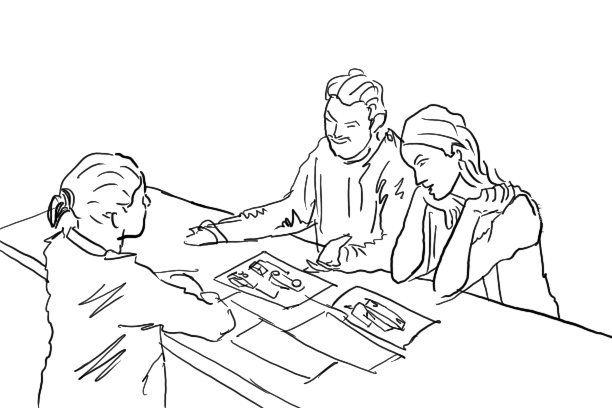
In this article, we are going to see base practices for batter product sketching
Seating position
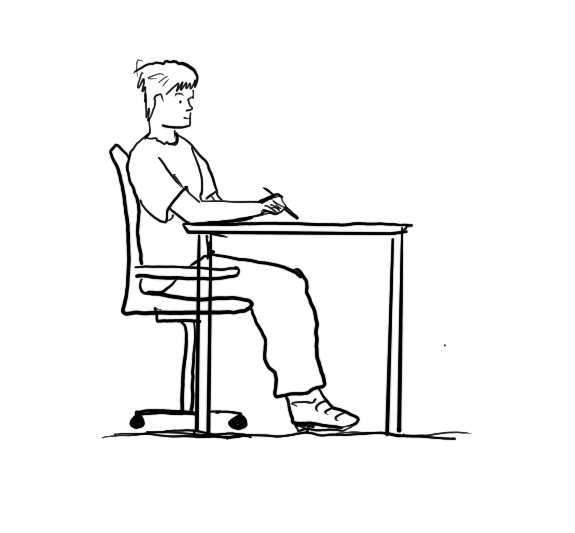
How you sit during the sketching is also going to affect the sketch output.
For starting the sketching practice, always sit on a chair and your hand should be rested on the table. Always check if you are comfortable with the table and chair.
As professional practice during brainstorming as designers, we have to sit with other designers so it required a bigger table to sketch
But as an individual, you can find out what is a comfortable position for you to work on a table chair.
Movement of hand
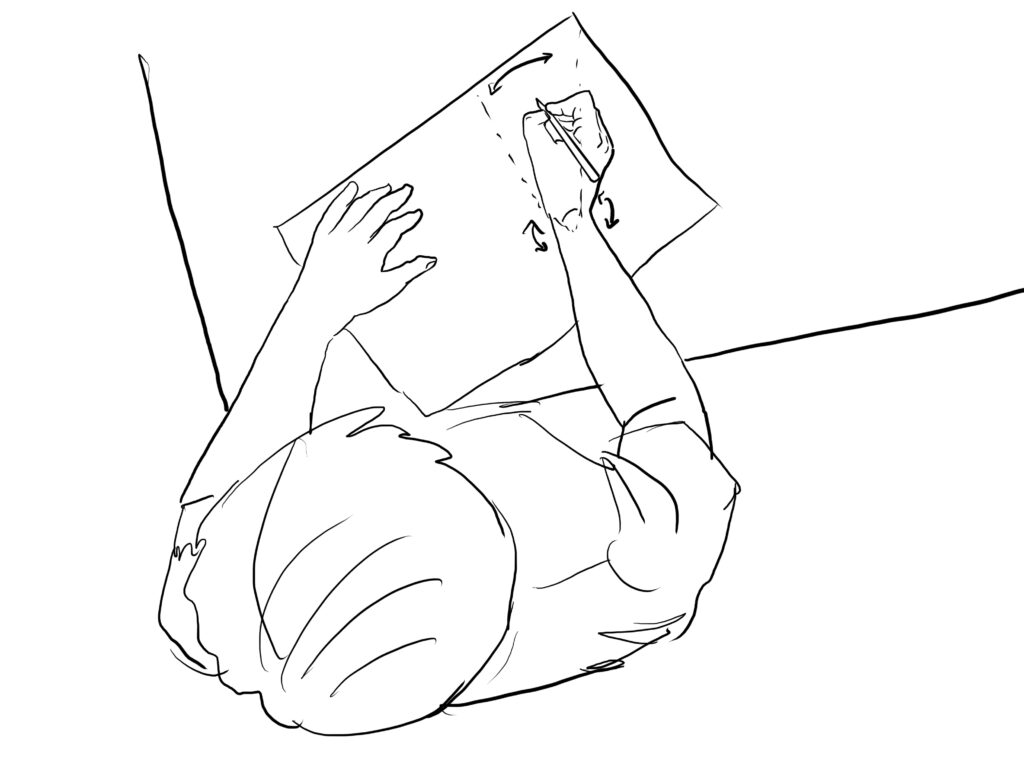
Good product sketching only can be achieved through everyday practice. The use of the hand for a long duration becomes important, and how you move your hand to create a sketch also plays a role.
To create a sketch you need to use your hand and fingers. How you use your hand will reflate the quality of the lines and strokes you are creating on paper with a pen.
Once you hold your pen and start sketching a line, if you use your wrist to move the pen it will create a small line and if you try to increase the length of strokes it will be curved.
If you try to use your elbow to move the pen it will create a straight line to a certain extent because it always moves with a pivot from your elbow
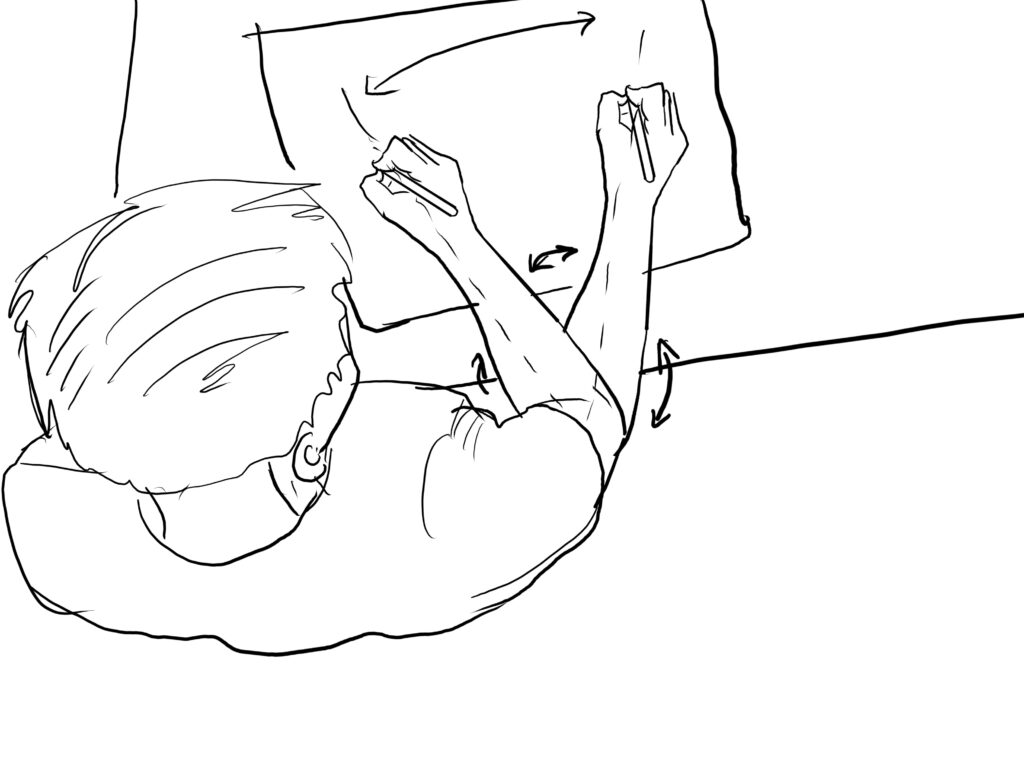
If you use your shoulder then you have better freedom to move your hand in a straight line so you can take reference support from the table and move your full hand to create a sketch stroke
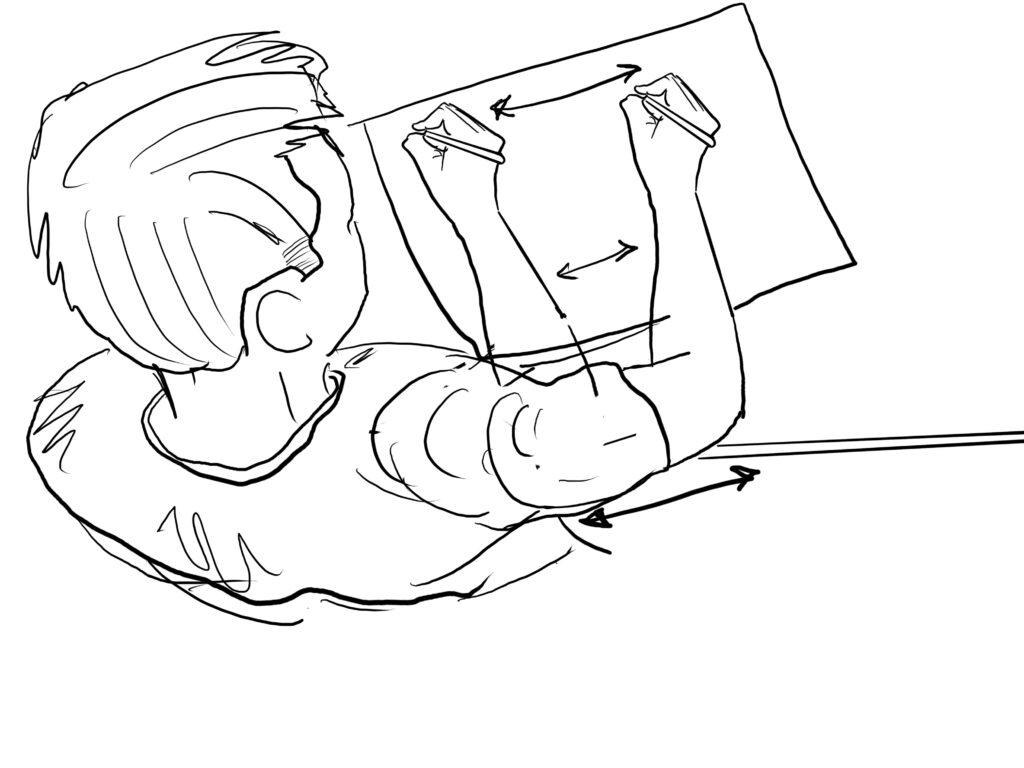
Yours your fingers as reference support or guideline keep your little finger touched in the paper it will provide stability to your hand and finger to move in straight strokes.
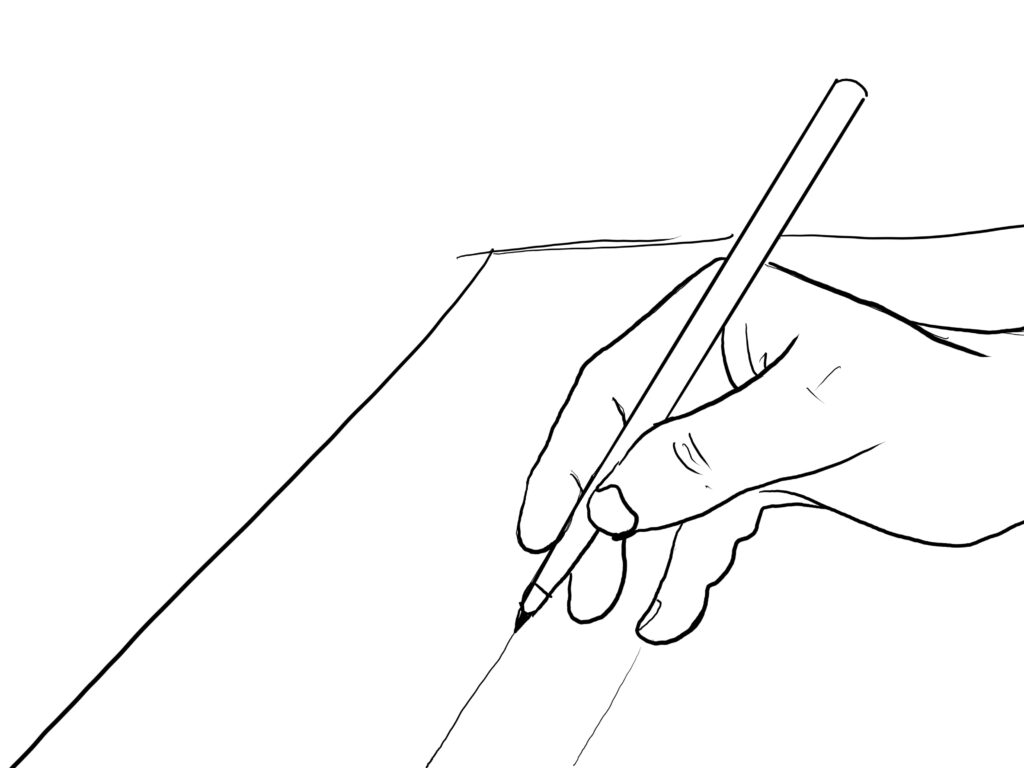
(image of finger touching paper )
Always use Pen
We always used pencils for drawing and sketching during childhood and it is difficult to move from pencil to pen. We need to create a habit of using the pen as there is no going back once you start the sketch you can not engage either you have to finish the drawing or start with a new sketch if both ways you will create different ideas and in the design process we need more unique ideas
Before sketching
Sketching practice is an essential aspect before jumping into product sketching
The products are made up of different geometrical shapes, So it is required to practice geometric shapes
Practicing various basic shapes and lines, such as horizontal lines, vertical lines, circles, ellipses, cubes, and square cylinders, is essential for improving the skills of a product designer.
Why mastering these foundational elements is important
- Precision and Accuracy: These basic shapes and lines serve as building blocks for more complex product sketches. Practicing them helps improve your precision and accuracy when drawing, ensuring that your final product sketches are proportional and realistic.
- Consistency: Consistency in your sketches is vital, especially when designing products. Regular practice with these shapes and lines helps you maintain a consistent style and level of detail throughout your sketches, which is important for creating cohesive product designs.
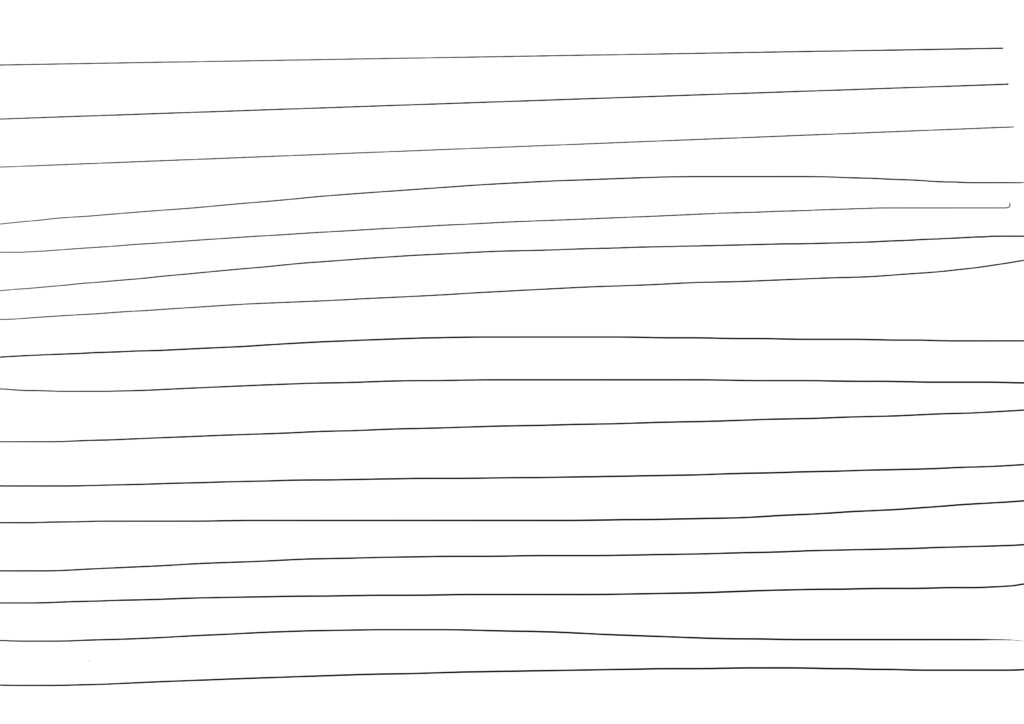
Understanding 3D Forms: Cubes and square cylinders, in particular, help you grasp the concept of three-dimensional forms. By sketching these shapes, you develop the ability to visualize and represent products in 3D space accurately. This skill is crucial for creating realistic product designs.
Spatial Awareness: Sketching circles and ellipses in various orientations and sizes enhances your spatial awareness and depth perception. These shapes are commonly found in products like wheels, buttons, and screens. Being able to draw them accurately is essential for conveying the product’s form effectively.
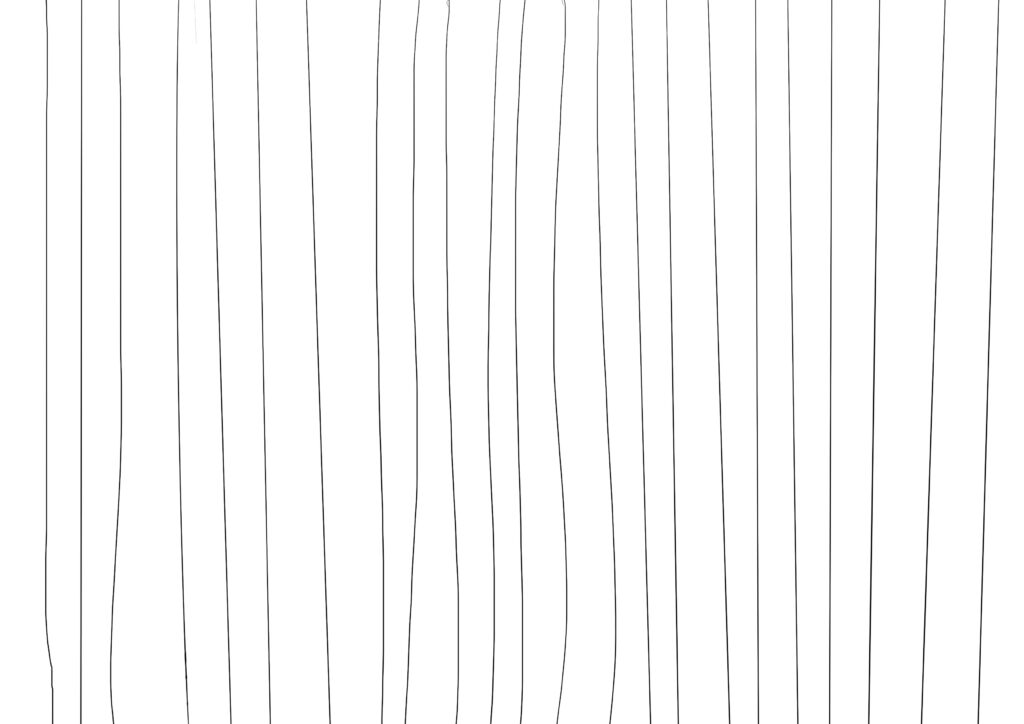
Versatility: These basic shapes and lines are versatile and can be combined and modified to represent various components and features of different products. Practicing them allows you to adapt and create a wide range of product sketches, from simple objects to complex designs.
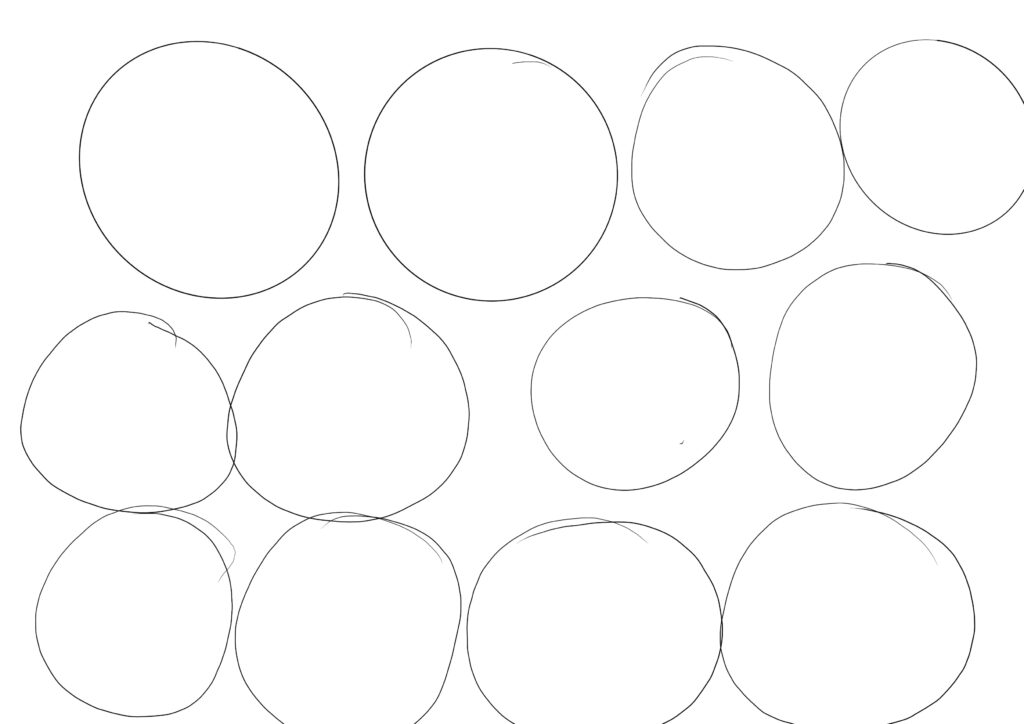
- Communication: As a designer, your sketches are a means of communicating your ideas to others, including clients, colleagues, and manufacturers. Mastery of these foundational elements ensures that your sketches are clear and easily understood by all stakeholders.
- Efficiency: Being proficient in drawing these basic shapes and lines saves time during the design process. You won’t need to struggle with getting the fundamental elements right, allowing you to focus more on the creative aspects of your product designs.
- Professionalism: Demonstrating strong skills in sketching basic shapes and lines reflects professionalism in your work. It shows that you have a solid foundation in design principles, which can enhance your credibility as a product designer.
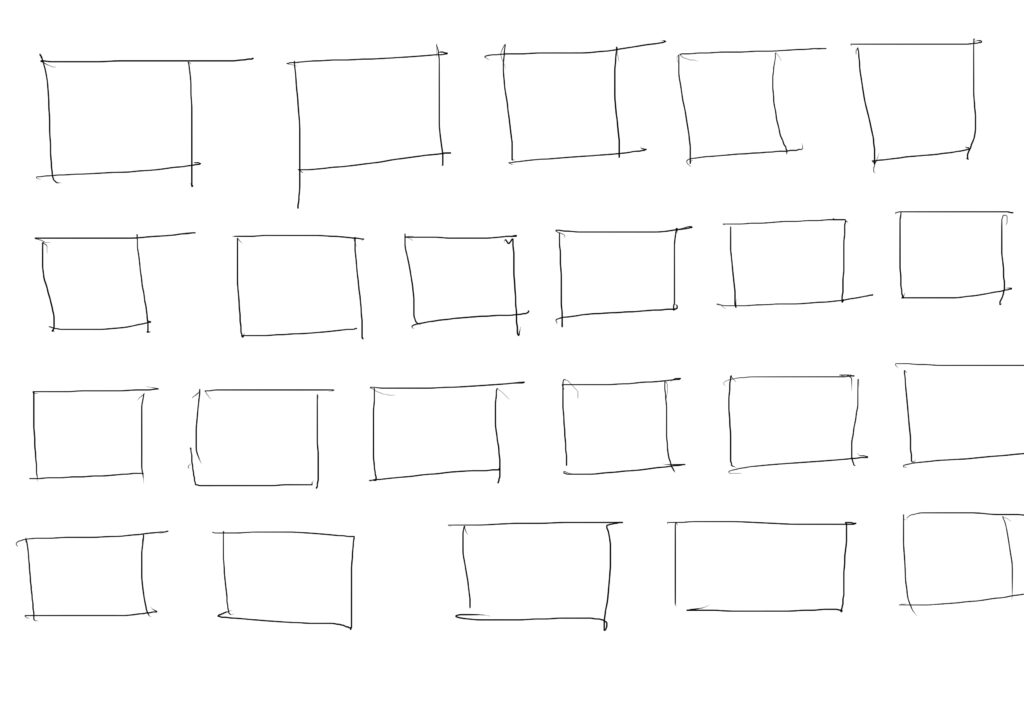
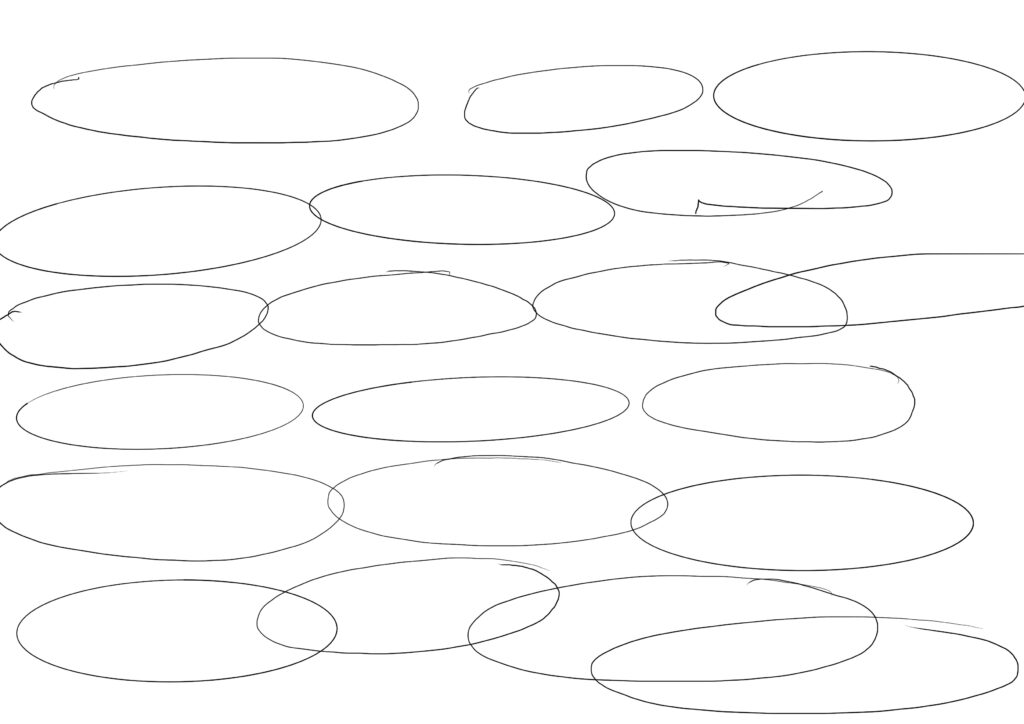
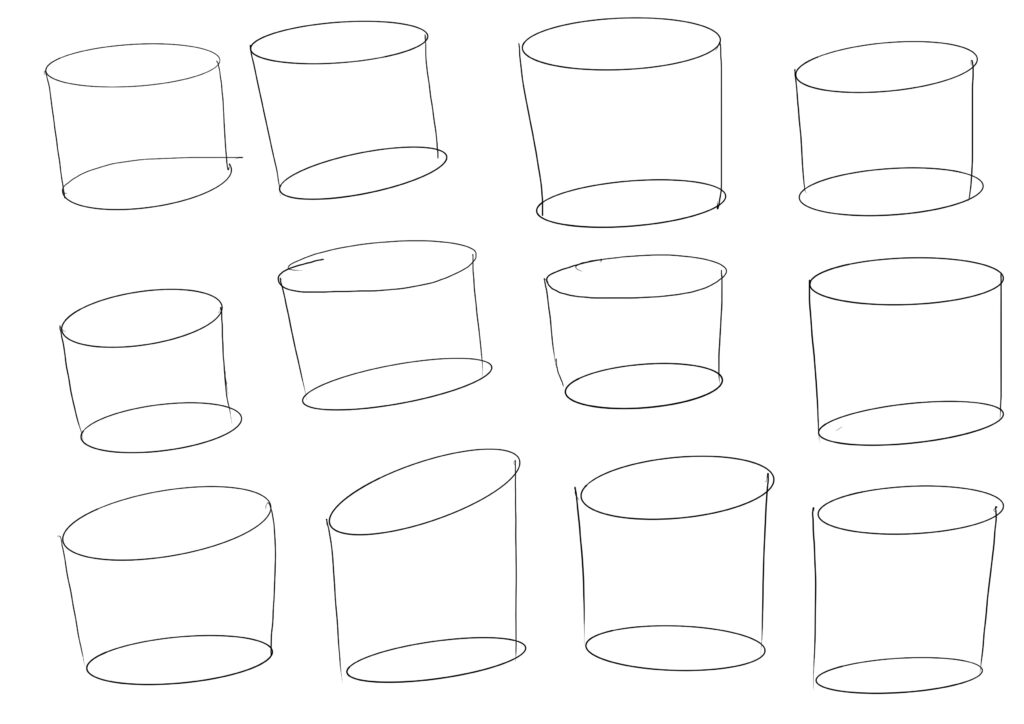
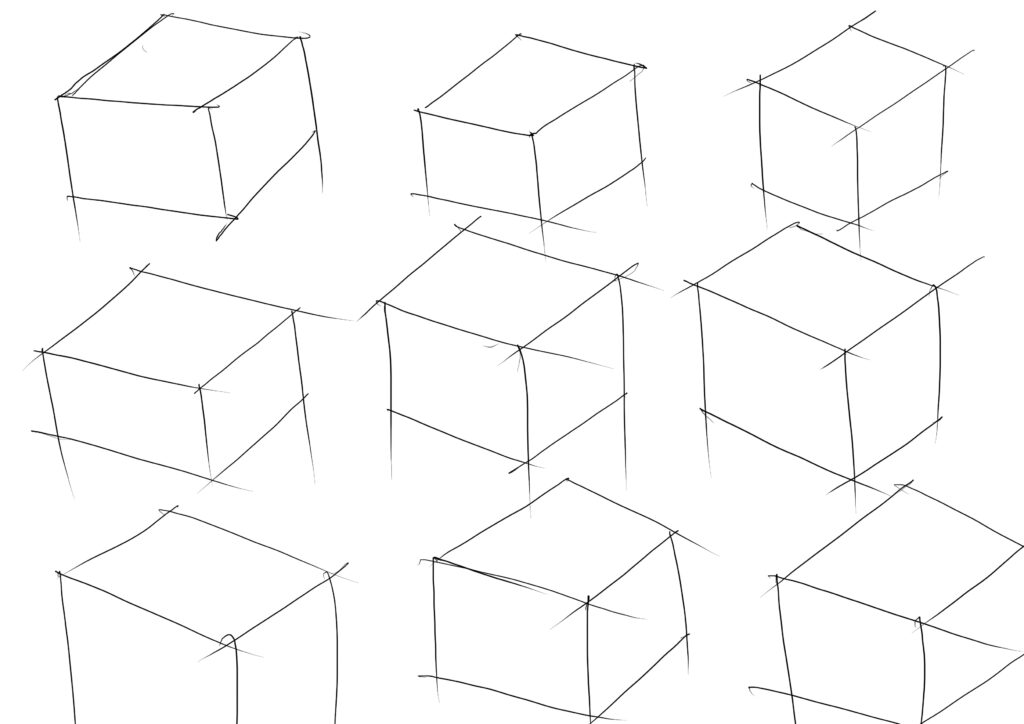
practicing horizontal lines, vertical lines, circles, ellipses, cubes, and square cylinders is fundamental for any product designer. These elements form the basis of your drawing skills and allow you to create accurate, clear, and visually appealing product sketches, ultimately improving your ability to design and communicate your ideas effectively.
Regenerate